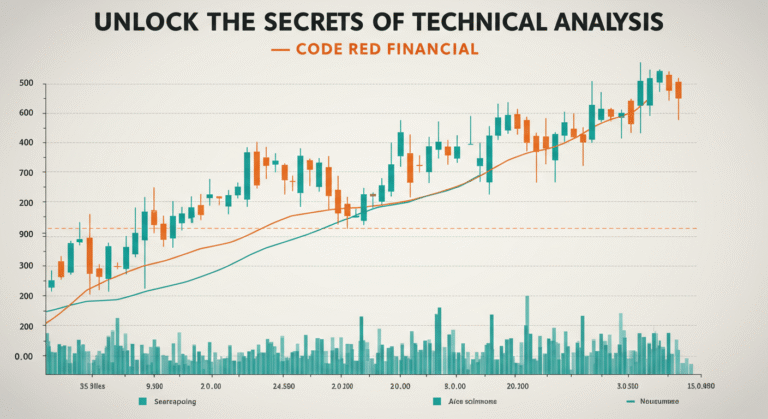
In the unpredictable investment world, one truth remains constant: market downturns are inevitable. While many investors panic and retreat when the market crashes, savvy investors view these moments as golden opportunities. Setting aside a dedicated investment fund for downturns is one of the most effective ways to build wealth, especially for investors with limited budgets.
This article will guide you through the process of creating a strategic fund to deploy during market downturns, explain how it differs from your regular investment portfolio, and explore how this strategy can help you navigate market volatility while building wealth over the long term.
Why Set Aside Funds for Market Downturns?
Market downturns often create a rare but valuable opportunity to buy strong, undervalued assets at deeply discounted prices. During these times, many investors panic and sell their assets, often at a loss, fearing further declines. But the savvy investor sees this as an opportunity to buy low.
By setting aside funds specifically for downturns, you can act swiftly when others are fearful, purchasing stocks and other assets at a fraction of their usual price. This gives you the potential to reap significant rewards when the market eventually recovers.
Real-World Examples: Turning the Great Recession into a Wealth-Building Opportunity
I’ve personally used this strategy during one of the most significant market downturns in modern history—the Great Financial Crisis (2007-2009). In the midst of widespread panic and market fear, I was able to pick up shares of some of the world’s best-known companies at a fraction of their normal value.
For example:

- Bank of America: I purchased shares for $2 to $3 per share during the height of the crisis. Today, its stock price has risen significantly.
- Citigroup: I bought shares for around $1 per share, a massive discount during the market collapse.
- Microsoft: I acquired shares for about $12 per share, which was a steal for such a well-established company.
These purchases were made possible because I had a downturn fund set aside, ready to deploy when the market presented these once-in-a-lifetime opportunities.
This approach doesn’t just apply to large-cap stocks like Bank of America or Microsoft. It can also work for smaller companies that are temporarily undervalued due to market conditions. The key takeaway here is that when the market is in freefall, assets are often priced irrationally low, making it a prime time for long-term investors to capitalize on.
The Power of a Dedicated Downturn Fund
A downturn fund is different from your regular investment portfolio. It is not designed for growth, but for seizing opportunities when prices drop. Here’s why this type of fund is so powerful:
1. Focus on Undervalued Assets
During market downturns, many fundamentally strong companies experience temporary price declines due to market panic or negative sentiment. A downturn fund allows you to take advantage of these discounts by buying high-quality, undervalued stocks and assets. Some of the best opportunities often arise when fear overtakes reason.
2. Perfect for Investors with Limited Budgets
If you’re an investor with limited funds, a downturn fund can be especially valuable. Many of the best companies—such as Bank of America, Citi, or Microsoft—were available at a fraction of their value during the Great Recession, giving small investors the chance to purchase stocks that might have been out of reach during a booming market.
3. Reduces Long-Term Risk
A well-executed downturn fund strategy can reduce overall portfolio risk by allowing you to buy undervalued assets that will likely rebound. During market downturns, while many assets may fall in price, the fundamentals of quality companies often remain strong. This means that as the market recovers, these companies are likely to regain their value—and your downturn fund allows you to capture these opportunities.
How to Create Your Investment Fund for Market Downturns
Creating an investment fund specifically for downturns requires careful planning. Here’s a step-by-step guide to get you started:
Step 1: Set Clear Objectives for Your Fund
Before you start setting money aside, it’s important to set clear goals. Define:
- How much of your total portfolio will be allocated to this fund.
- How much will you contribute to it over time (e.g., monthly, quarterly).
- What your target amount is for the fund (e.g., $5,000, $10,000, or more, depending on your situation).
Having clear objectives ensures you stay disciplined and focused on using the fund specifically for downturn opportunities.
Step 2: Choose the Right Assets to Target
Decide which types of assets you’ll focus on when deploying your downturn fund. High-quality stocks, especially large-cap stocks with strong fundamentals, are excellent choices. You can also look at other assets like real estate, bonds, and commodities.
The key is to focus on assets that are undervalued but have strong recovery potential over the long term. Avoid high-risk speculative investments during downturns. This fund is about buying fundamentally strong assets at discounted prices.
Step 3: Build the Fund Over Time
Once you’ve established your goals and asset targets, begin building your fund. You don’t need to contribute large sums all at once. A good approach is to set aside small, regular contributions, which can accumulate over time. For example, you might allocate 5%-10% of your monthly income to this fund. This regular savings habit can grow your fund even if you start small.
Step 4: Stay Informed and Act Quickly
When the market begins to show signs of a downturn or correction, you’ll need to act quickly. The key to this strategy is timing. Your downturn fund is there to be deployed when high-quality assets drop in value, and you should be prepared to act when those opportunities arise.

Dollar-Cost Averaging (DCA) and Risk Management
While your downturn fund is designed to be deployed during market declines, it can also work hand-in-hand with Dollar-Cost Averaging (DCA). DCA is a strategy where you invest a fixed amount of money at regular intervals, regardless of the market’s direction. This can smooth out the impact of short-term market fluctuations, allowing you to buy assets consistently over time.
Risk Management is another crucial component. While a downturn fund is designed to be low-risk, it’s still important to diversify within the fund, ensuring you’re not overexposed to one sector or asset class. Additionally, consider using tools like stop-loss orders to protect your assets from excessive downside during volatile periods.
Tactical vs. Strategic Approach
A downturn fund strategy is tactical, meaning it’s focused on seizing opportunities during specific market conditions (i.e., when prices are lower than usual). This contrasts with a strategic investment approach, which typically focuses on long-term growth and consistency. It’s important to balance both approaches in your overall investment strategy.
- Tactical: Your downturn fund, used to buy assets when markets are in decline.
- Strategic: The rest of your portfolio, focused on long-term growth and stability.
Together, these approaches complement each other, allowing you to build wealth over time while seizing profitable opportunities when the market dips.
Building Wealth Through Reinvesting Gains from the Downturn Fund
Once you’ve deployed your downturn fund and the market starts to recover, reinvesting any gains is crucial for long-term wealth-building. Reinvesting profits from downturn fund assets into future downturn opportunities allows you to compound returns over time, leading to even more wealth accumulation.
The Psychological Benefits of a Downturn Fund
Having a dedicated downturn fund provides peace of mind. When market crashes occur, the emotional response for many investors is panic and fear, which can lead to poor decision-making. But with a downturn fund in place, you can approach these situations with a sense of calm and preparedness. You’ll be ready to seize opportunities, rather than retreat in fear.
This psychological advantage can make a big difference in maintaining a rational, long-term perspective during volatile times.
Conclusion: Expanding the Strategy for Long-Term Success
By setting aside a downturn fund, you’re positioning yourself to take advantage of market volatility and build wealth over the long term. Whether you invest in stocks, bonds, or real estate, or any other asset, having this fund will allow you to act when others are pulling back, giving you the chance to buy high-quality assets at attractive prices.
Remember, the key to making this strategy work is consistency, discipline, and the willingness to seize opportunities when they arise. By staying informed, managing risk, and staying patient, you can turn market downturns into powerful wealth-building moments.
Call to Action
Have you ever used a downturn fund to grow your wealth? Share your experiences and thoughts in the comments below. What strategies have worked for you during market downturns, and how have you taken advantage of opportunities in times of uncertainty? Let’s continue the conversation and learn from one another!




